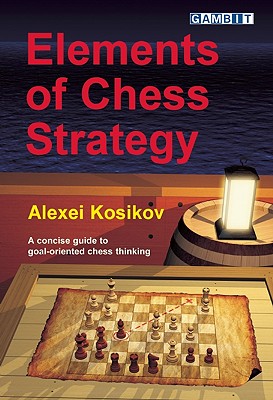Forming a plan is the most important goal of logical chess thought. Without a good plan, we are reduced to tactical opportunism, rather than harnessing the power of our pieces to achieve specific tasks and make methodical progress towards victory.
However, few chess-players - even those fortunate enough to have a trainer - develop a disciplined approach to planning. In this book, one of the world's leading chess teachers provides step-by-step guidelines for identifying the features of a position onto which our strategy should be latched. He adopts a thoroughly modern approach, recognizing that the opponent will have his own plans and be attempting to disrupt ours. The effectiveness of Kosikov's methods - in particular the STEPS algorithm - is shown by his pupils' over-the-board proficiency.
Having presented the basics of orderly strategic thinking, Kosikov shows them at work in a variety of middlegame and endgame situations, especially the strategic minefield of minor-piece play. Examples are taken from both classic games and modern grandmaster play, together with instructive moments from games by the author's pupils.
However, few chess-players - even those fortunate enough to have a trainer - develop a disciplined approach to planning. In this book, one of the world's leading chess teachers provides step-by-step guidelines for identifying the features of a position onto which our strategy should be latched. He adopts a thoroughly modern approach, recognizing that the opponent will have his own plans and be attempting to disrupt ours. The effectiveness of Kosikov's methods - in particular the STEPS algorithm - is shown by his pupils' over-the-board proficiency.
Having presented the basics of orderly strategic thinking, Kosikov shows them at work in a variety of middlegame and endgame situations, especially the strategic minefield of minor-piece play. Examples are taken from both classic games and modern grandmaster play, together with instructive moments from games by the author's pupils.

 看圖書介紹
看圖書介紹










